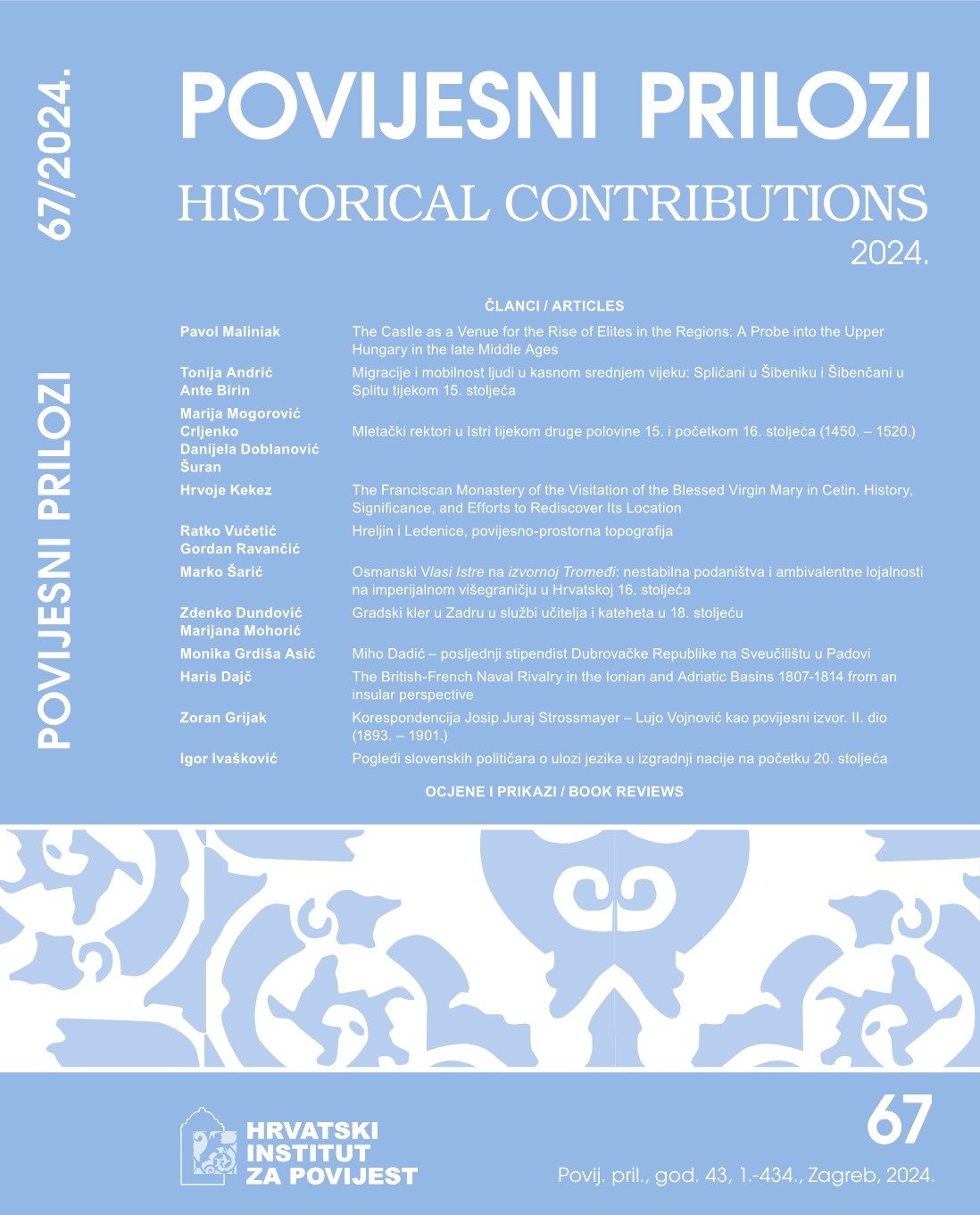Osmanski Vlasi Istre na izvornoj Tromeđi: nestabilna podaništva i ambivalentne lojalnosti na imperijalnom višegraničju u Hrvatskoj 16. stoljeća
DOI:
https://doi.org/10.22586/pp.v43i67.30587Ključne riječi:
Vlasi, Morlaci, Ćići, migracije, podaništva, lojalnosti, rani novi vijek, Tromeđa, Osmansko Carstvo, vilajet Hrvati, sandžak Klis, Habsburška Istra, Kras, Pazinska grofovija, Bukovica, Ravni kotari, Mletačka Istra, Mletačka Dalmacij, zadarski distriktSažetak
U radu se, polazeći od neobjavljenih i objavljenih osmanskih, mletačkih i habsburških izvora, analizira vlaška skupina poznata u historiografji kao „Vlasi Istre”, koja je u prvoj polovini 16. stoljeća sociodemografski dominirala na prostoru „izvorne Tromeđe” u Hrvatskoj. Riječ je o povratničkoj vlaškoj skupini iz habsburškoga dijela sjeveroistočne Istre i Krasa čiju su demografsku jezgru činili potomci hrvatskih srednjovjekovnih Vlaha, koji su se početkom 16. stoljeća pred osmanskim osvajanjima u više navrata iseljavali prema sjeverozapadu. U sklopu osmanske kolonizacijske politike istimâlet dio tih Vlaha povratio se između 1528. i 1530. u svoja stara boravišta u vilajetu Hrvati, odnosno sandžaku Klis. Radilo se o vlaškoj skupini koja se više od pola stoljeća reverzibilno i ciklično kretala u prostoru imperijalnoga višegraničja, prelazeći u nova i vraćajući se u stara podaništva – osmanska, habsburška i mletačka. Na njihovu primjeru analiziraju se fenomeni koji su proizlazili iz dinamičnih i složenih odnosa na granici kao što su povratne migracije, nestabilna podaništva i ambivalentne lojalnosti. Riječ je o modusima koje je nametao nesiguran život na nemirnoj granici, a podrazumijevao je prilagodljive i kompromisne oblike djelovanja. Koristeći se osmanskim poreznim popisima iz 1528. – 1530., 1540., 1550. i 1574., propituju se njihove društvene, demografske, ekonomske i etnokulturne strukture, kao i uzroci njihova nestajanja kao prepoznatljive skupine u drugoj polovini 16. stoljeća.
Preuzimanja
Objavljeno
Broj časopisa
Rubrika
Licenca
Autorska prava (c) 2024 Authors and journal

This work is licensed under a KreativniCommons Attribution-NonCommercial Međunarodne licence.



